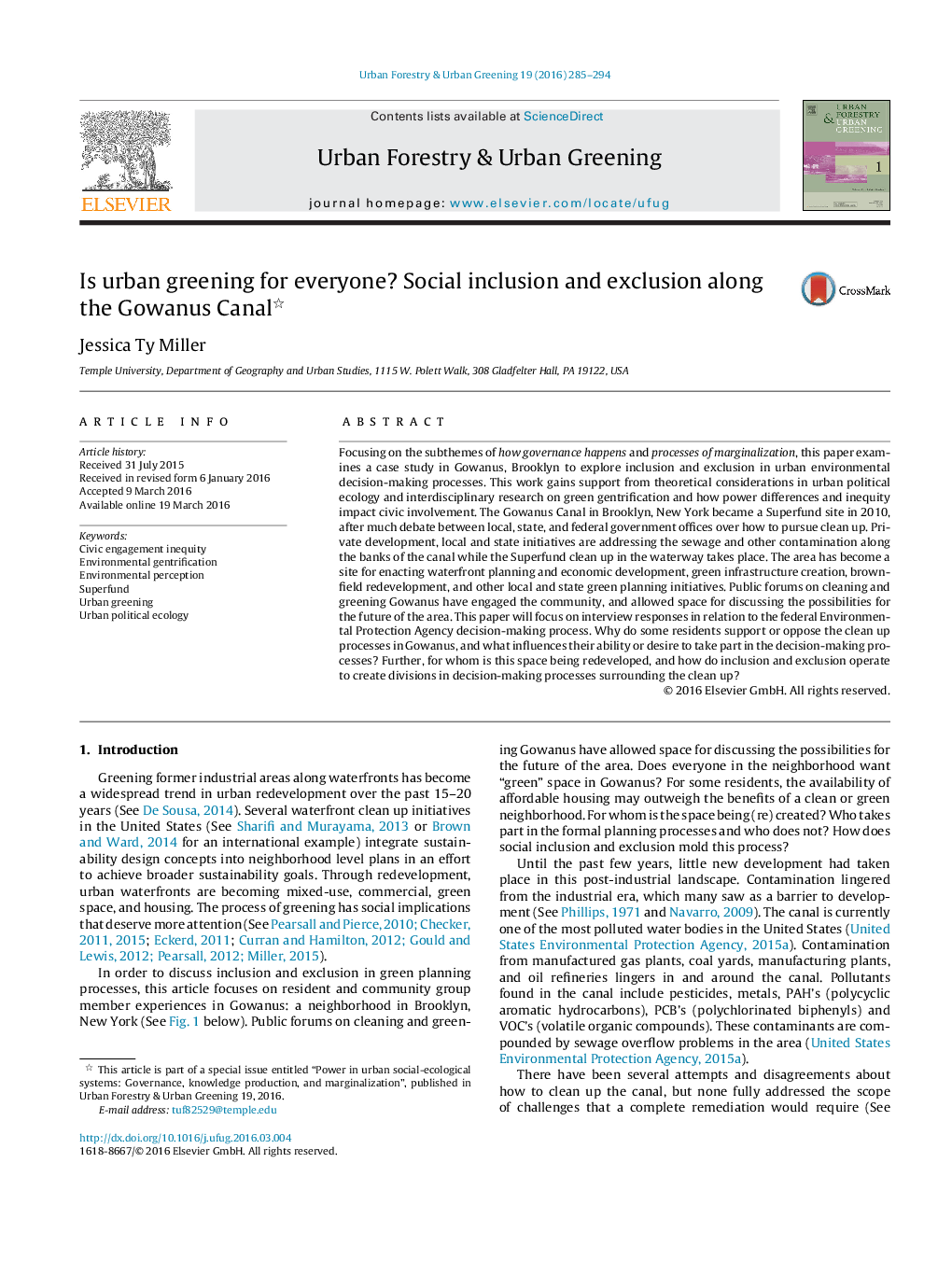| Article ID | Journal | Published Year | Pages | File Type |
|---|---|---|---|---|
| 6549539 | Urban Forestry & Urban Greening | 2016 | 10 Pages |
Abstract
Focusing on the subthemes of how governance happens and processes of marginalization, this paper examines a case study in Gowanus, Brooklyn to explore inclusion and exclusion in urban environmental decision-making processes. This work gains support from theoretical considerations in urban political ecology and interdisciplinary research on green gentrification and how power differences and inequity impact civic involvement. The Gowanus Canal in Brooklyn, New York became a Superfund site in 2010, after much debate between local, state, and federal government offices over how to pursue clean up. Private development, local and state initiatives are addressing the sewage and other contamination along the banks of the canal while the Superfund clean up in the waterway takes place. The area has become a site for enacting waterfront planning and economic development, green infrastructure creation, brownfield redevelopment, and other local and state green planning initiatives. Public forums on cleaning and greening Gowanus have engaged the community, and allowed space for discussing the possibilities for the future of the area. This paper will focus on interview responses in relation to the federal Environmental Protection Agency decision-making process. Why do some residents support or oppose the clean up processes in Gowanus, and what influences their ability or desire to take part in the decision-making processes? Further, for whom is this space being redeveloped, and how do inclusion and exclusion operate to create divisions in decision-making processes surrounding the clean up?
Related Topics
Life Sciences
Agricultural and Biological Sciences
Forestry
Authors
Jessica Ty Miller,
